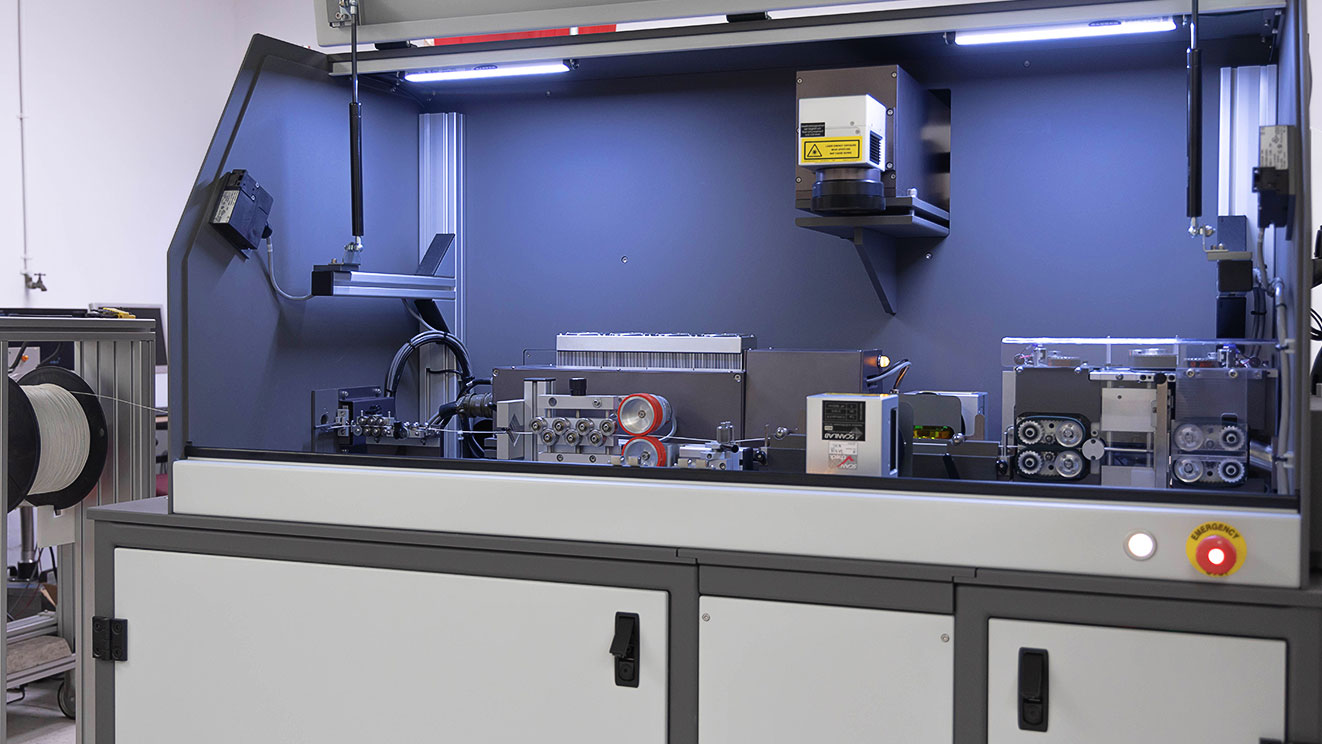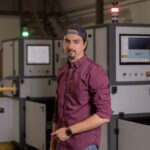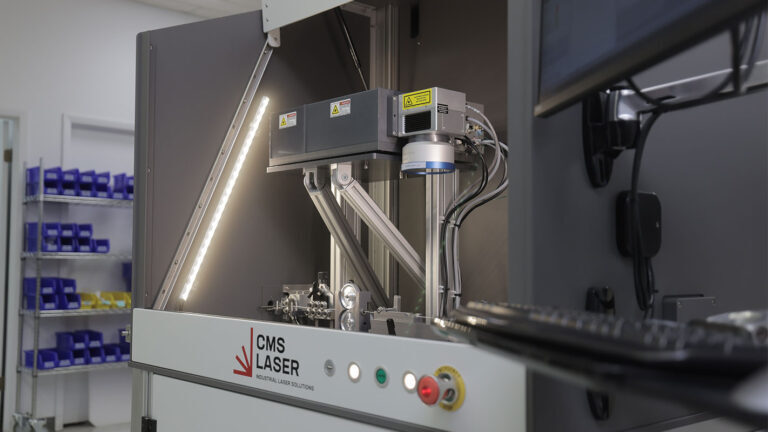One of the challenges we regularly tackle for our clients, across all industries, is how to incorporate a laser system into a greater manufacturing process. Not only that, but many clients are looking for automation built into the solution in order to optimize manpower and production.
In a recent post, we described a laser system built for an endoscopic device manufacturer for cutting and weld capping multi-stranded stainless steel guide wires. In this post, we’ll take a deeper look at the automated elements of this laser system and how they helped achieve the client’s goals for high production throughput, accuracy and repeatability.
Cutting & Capping of Endoscopic Laser System Overview
A laser-based manufacturing system for medical devices – endoscopic guide wires – was developed using a high-power fiber laser. An automatic feed system pulls medical grade stainless steel stranded cable from a supply spool to precise lengths. Using laser beam steering optics, the system cuts and processes each end of the laser cut cable to produce a spherical welded cap that captures each strand.
Take a look at this video to see the laser system in action:
How Automation Improved the Laser System’s Overall Performance
1. Productivity
The user-friendly programming interface provides easy setup and short change-over times to maintain a high level of productivity. Our proprietary software helps guide the operator; they simply select the specifications for the job and the system largely does the rest. This frees up valuable worker time to take on other tasks.
In this particular system, the operator can define the length of the guide wires and the amount of guide wires to process. The control software prompts operator to load the product (a spool of stainless steel wire) into the wire transport system. The system then pulls the wire and the laser makes an initial cut and welds the end.
The automated feeding system then pulls the wire to the programmed length and makes the second cut and weld caps the end. The finished guide wire is then placed into the collection bin and the operator verifies it was cut to the correct length.
After the operator’s manual verification, the system can then be set to consume the entire spool of wire, or a predetermined amount of guide wires. Once the spool is exhausted, or the guide wires have reached the programmed level of production, the system will stop.
In this system, 0.031 inch thick multi-stranded stainless steel wire was being processed, which comes in a spool of over 17,000 feet. However, this same application could easily be adapted and programmed to handle different guide wire diameters based on client needs.
2. High Throughput
With the automation elements of this laser system, the client was able to achieve high throughput and repeatability. The level of production varies with the length of the guide wire being cut, but a laser system was preferable to other options due to its ability to be automated.
For example, another option for this application included a manual mechanical cut and TIG welding, but this was an extremely slow process for a large quantity of cuts, and did not provide the same consistent quality at the welded end caps of the guide wire.
3. Integration into Larger Manufacturing Processes
As a laser integrator, we work closely with our clients to ensure we develop and build a solution that fits into their greater processes. In this application, the guide wires were not a finished product, rather they were an element to other endoscopic devices.
Taking in the bigger picture of the client’s manufacturing process was crucial to producing a successful laser system. The production and throughput had to align with their overall needs and consider growth potential in the coming years.
4. Other Advantages
Multiple User Levels
Our proprietary software allows for multiple user levels: operator, engineering and administrator. This helps to accommodate a busy manufacturing floor and ensure the system’s specifications can only be changed by those authorized to do so.
For example, in the operator mode, there is limited access to the controls, except to hold and release for a spool change, shift change, or to unload the finished guide wires. A visual stack light clearly indicates what user level the system is in.
Safety & Compliance
This laser-based manufacturing system is a Center for Devices and Radiological Health (CDRH), a division of the Food and Drug Administration (FDA), Class I. It meets all defined safety specifications and does not require laser safety glasses to be worn during operation.
Final Thoughts
With high production throughput with excellent accuracy and repeatability, our final laser-based solution ensured an outstanding price and performance ratio for our client. The work of our engineers in our Applications Development Lab laid the foundation for the optimal solution for this client’s endoscopic device manufacturing challenges.
Do you have a challenges with endoscopic device manufacturing? Contact us today to discuss your needs and specifications.








0 comments
Leave a comment.